PassMark PerformanceTest 7.0
Here’s another benchmark suite, PassMark’s PerformanceTest. It’s a bit more concise, but no less thorough:
Patterns from previous suites hold true here as well: top-end Nehalem CPUs beat our test system, everything else gets stomped.
While we’re not offered any direct basis for comparison here, the numbers speak for themselves: the Sandy Bridge memory controller keeps the data moving with alacrity.
Once again, the Cougar Point SATA 6.0Gbps controller keeps things moving swiftly—no doubt helped here by the muscle of the Crucial RealSSD C300.
PCMark Vantage
Now let’s check in with everyone’s favorite one-button suite, PCMark Vantage.
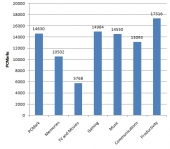
As expected, our test system scored well over the 10,000 mark in most of the tests. The TV and Movies test caused it to dip quite a bit, curiously. This doesn’t square with any of our experience with actual video, though.
3DMark Vantage
Of course, no evaluation would be complete without a run-through of PCMark’s gamer counterpart, 3DMark Vantage.

With a CPU score like this, it’s clear that if there’s any bottleneck here, it’s the GPU. Note that since this system uses a Nvidia GPU, the GPU was helping with physics tests—much as it would with any PhysX-enabled game.
Unigine Heaven
Though this involves the GPU as much as the CPU, we felt we couldn’t go without testing this setup on one of the latest DX11 benchmarks: Unigine Heaven.
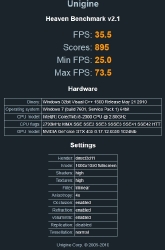
With results like these, it’s clear that the CPU isn’t holding anything back.
TrueCrypt
On the more practical side of things, TrueCrypt’s in-built benchmarks give us a look at how the combination of i5 2300 and P67 will benefit us in whole-disk encryption.
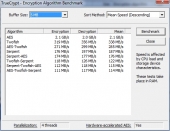 |
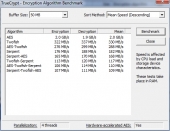 |
While the results with the other algorithms are respectable, the AES test is where this system truly shines. Intel’s AES instructions, new to the Sandy Bridge architecture, allow for a walloping-fast 2GB/s throughput. Given how prevalent AES is in both encryption and compression, this is very good news.
x264 HD Benchmark
With hardware-accelerated H.264 playback in just about every mobile device with a screen coming out these days, transcoding is an activity more and more of us find ourselves engaged in. What better way to test real-world performance than to run a video sample through the most popular open-source H.264 encoder? TechARP has thrown together a benchmark that does exactly this.
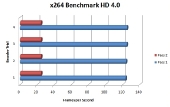
Here the results are remarkably consistent across attempts. x264 uses a two-pass approach to encoding by default: on the first pass no data is written, but estimates of average bitrate at each point in the video are stored in a temp file. On the second pass, the actual encoding happens, with those estimates used to portion out the bits as needed. For this test video, the 720p source encoded at 24.5fps on each of the four attempts—quite impressive, given how CPU-intensive the task is.
Alien Versus Predator D3D11 Benchmark
Of course, what evaluation is complete without a look at real-world gaming performance? For this we turned to the latest Alien Versus Predator game, by Rebellion Software.

Though there were a few dips below the 30fps mark during action-intense scenes, the overall framerate is quite playable.

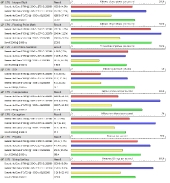



[…] MSI P67A-GD80 Motherboard @ TechwareLabs […]
[…] TechwareLabs Evocarlos @ MSI forums *expect to see more reviews in the coming […]
[…] MotherboardsMSI P67A-GD80 @ TechwareLabs […]
[…] MSI P67A-GD80 Motherboard | TechwareLabs […]
[…] MotherboardsMSI P67A-GD80 @ TechwareLabs […]
[…] MSI P67A-GD80 Motherboard @ Techwarelabs […]
[…] by storm. MSI's swinging for the bleachers here, let's see if they hit a Grand Slam or a foul ball.http://www.techwarelabs.com/msi-p67a-gd80-motherboard/DiggLeave a Reply Click here to cancel reply. Name (required) Mail (will not be published) […]
[…] P67A-GD80 Motherboard – TechwareLabs […]